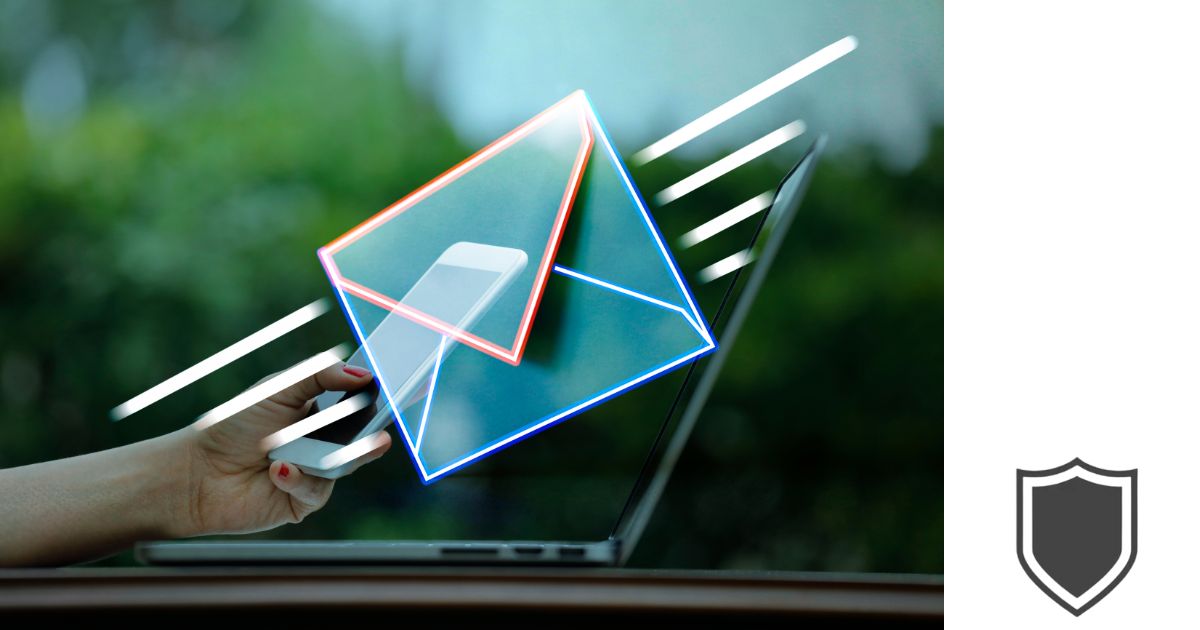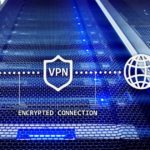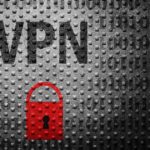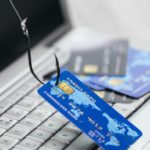Hello everyone, I am Dr. Edward Baldwin, and I am here to lead you through the world of secure digital communication. In today’s age, as our emails traverse the vast space of cyberspace, it is vital to highlight the importance of protecting these digital messages. This brings us to our essential guide on email encryption.
Think of email encryption not just as a tool, but as a guardian of your private conversations. It’s the digital equivalent of a sealed envelope, compared to the all-too-common postcard format of standard email. In this guide, we’ll explore the why, the how, and the what of email encryption – transforming your emails from open letters to unbreakable vaults.
Whether you’re a business professional handling sensitive data, or an individual keen on keeping your personal emails private, this guide is tailored for you. So, let’s dive in and arm ourselves with the knowledge and tools to keep our digital conversations secure and private. The era of unbreakable email secrets begins now!
Table of Contents
Understanding Email Encryption

Email encryption is crucial for protecting the confidentiality of your messages. It ensures that only the intended recipient can read your email, safeguarding your information from potential eavesdroppers.
What Is Email Encryption?
Email encryption is the process of converting the content of an email into a form that is unreadable to anyone except the intended recipient. This technique is used to protect sensitive information from being intercepted or accessed by unauthorized individuals.
How Does Email Encryption Work?
When I encrypt an email, the message content is transformed into ciphertext, an unreadable format, using an algorithm and an encryption key. Only the recipient who possesses the corresponding decryption key can convert this ciphertext back into readable text. There are two essential elements in this process:
- Encryption Key: The tool used to encrypt the content of the message.
- Decryption Key: The tool used to decrypt the content and return it to its original form.
Types of Email Encryption Protocols
There are several email encryption protocols designed to secure your communications:
- Transport Layer Security (TLS):
- This protocol secures emails as they move across networks, protecting the data from eavesdroppers during transmission.
- It doesn’t encrypt emails stored on servers.
- Secure/Multipurpose Internet Mail Extensions (S/MIME):
- S/MIME is built into many modern email clients and encrypts both message bodies and attachments.
- It requires a unique certificate for each user.
- Pretty Good Privacy (PGP)/OpenPGP:
- These protocols allow for end-to-end email encryption, meaning emails are encrypted on the sender’s side and decrypted by the recipient.
- They involve both a public key, which can be shared with anyone, and a private key, which must be kept secure by the user.
Setting Up Email Encryption

When securing email communications, encryption is a fundamental component. I’ll guide you through the essential steps to set up encryption for your email.
Email Encryption Software and Tools
To start encrypting my emails, I need to select reliable encryption software. Many tools support Secure/Multipurpose Internet Mail Extensions (S/MIME) and Pretty Good Privacy (PGP). These are standards for public key encryption and can be integrated with various email clients. For example, Microsoft Outlook and Apple Mail have built-in support for S/MIME, whereas PGP may require additional software like Gpg4win for Windows or GPG Suite for macOS.
Configuring Encryption in Email Clients
Once I have my encryption software, the next step is to configure it with my email client. The process typically involves:
- Accessing Security Settings: In my email client, I navigate to the security settings, often found under ‘Account Settings’ or ‘Options.’
- Importing Certificates: Here, I import my digital certificate, selecting the appropriate S/MIME certificate if necessary.
- Adjusting Encryption Preferences: I can then set up my preferences, like choosing to encrypt all outgoing emails or only those that I manually select.
Obtaining Digital Certificates
A digital certificate, also known as a public key certificate, is required to encrypt or digitally sign emails. Here’s how I obtain one:
- Certificate Authorities (CAs): I can acquire a certificate from a CA, like Comodo or DigiCert. Certificates are often issued after verifying my identity.
- Self-Signed Certificates: Alternatively, for internal or personal use, I could create a self-signed certificate, though it’s less trusted than one issued by a CA.
- Enterprise Management: If I’m part of an organization, the IT department might issue and manage digital certificates on my behalf.
Using Email Encryption

Email encryption is crucial for protecting sensitive information. I’ll guide you through the essentials of sending and receiving encrypted emails, and how to manage them efficiently.
Sending Encrypted Emails
When I send an encrypted email, I use a public key that corresponds to the recipient’s private key. Here’s how I do it:
- Obtain the recipient’s public key, which might be shared with me or found on a public key server.
- Use an email client that supports encryption, like Microsoft Outlook or an app with PGP (Pretty Good Privacy) capabilities.
- Compose my email and select the encryption option. This option is typically found under the ‘Security’ settings of the email composition window.
By doing this, the email is encrypted, and only the recipient’s private key can decrypt it.
Receiving and Decrypting Emails
Upon receiving an encrypted email, I must use my private key to decrypt it. The process is:
- I open my email client, which detects the encrypted message.
- I am prompted to enter the passphrase that protects my private key.
- Once the passphrase is verified, the email client decrypts the email for me to read.
It’s important to never share my private key or passphrase to maintain the security of my communications.
Managing Encrypted Email Storage
For the safekeeping of encrypted emails, I adhere to these practices:
- Store encrypted emails in a secure folder within my email client.
- Backup my encryption keys (both public and private) in a secure location.
- Regularly update and change my passphrase to boost security.
By managing my encrypted emails and keys carefully, I ensure the longevity and security of my sensitive information.
Best Practices for Email Encryption

In the realm of email encryption, it’s essential to implement stringent practices to safeguard our communications effectively. Here’s how I ensure the best protection using encryption.
Choosing Strong Encryption Algorithms
When I choose encryption algorithms, I prioritize those that are widely recognized for their strength and resistance to cryptanalysis. For example, AES (Advanced Encryption Standard) is a go-to for securing sensitive data. I make sure the encryption service provider supports robust protocols like RSA and ECC for key exchange, which are essential for establishing a secure channel.
Handling Encryption Keys Securely
Key management is crucial in maintaining the security of my encrypted emails. I always:
- Generate Keys Properly: Use trusted platform modules or hardware security modules when possible for key generation to ensure true randomness.
- Store Keys Securely: I never store my private keys on the server or any location that could be accessed by unauthorized parties.
- Backup Keys Safely: For key backup, I use secure physical devices and ensure they’re stored in a different location than where I normally access them.
Educating Users on Email Security
Educating others on secure email practices is as important as using strong algorithms. Here are my pointers:
- Be Wary of Phishing Attempts: I always remind users never to click on links or download attachments from unknown sources.
- Secure Passwords: Encourage the use of complex, unique passwords and the use of reputable password managers.
- Regular Training: Regular cybersecurity training helps keep everyone up-to-date on the latest threats and best practices.
Advanced Topics in Email Encryption

In my journey through email security, I’ve found some areas to be particularly crucial for those looking to deepen their understanding. Let’s explore some of the advanced aspects of email encryption that are critical for maintaining robust security measures.
Public Key Infrastructure (PKI)
PKI is the framework that enables secure communications through the use of a pair of keys: a public key and a private key. Public keys are shared openly to encrypt messages, while private keys are kept secret and used to decrypt messages. PKI involves various components such as certificates, Certificate Authorities (CAs), and registration authorities, which work together to authenticate the identity of the email sender and receiver.
End-to-End Encryption in Email
End-to-end encryption is vital for ensuring that only the sender and the intended recipient can read the content of an email. Even if the message is intercepted during transit, it remains unreadable to any third party. To achieve this, email services often employ algorithms like PGP (Pretty Good Privacy) or S/MIME (Secure/Multipurpose Internet Mail Extensions), which use a unique set of encryption keys for every user.
Email Encryption Standards and Compliance
Adhering to encryption standards and compliance regulations is crucial for businesses to protect sensitive data and avoid legal implications. Standards like TLS (Transport Layer Security) provide encryption in transit, while compliance rules such as GDPR, HIPAA, or FERPA dictate specific encryption requirements for different industries. It’s important to ensure that your email encryption solutions meet these standards to protect not just privacy but also to maintain compliance with laws and regulations.
The Final Word
And that’s a wrap on our journey through the world of email encryption. “Unbreakable Secrets: The Ultimate Email Encryption Guide” aimed to demystify the complex world of securing your digital correspondence, and I hope it’s left you feeling empowered and ready to take control of your online privacy.
Remember, in this era of rampant cyber threats, taking steps to encrypt your emails is more than just a precaution; it’s a necessity. Whether you’re discussing sensitive business strategies or sharing personal stories, your emails deserve the same level of security as any private conversation. By implementing the strategies and tools we’ve discussed, you’re not just protecting your information, you’re upholding a standard for digital communication.
So, go forth with the confidence that your emails are shielded by unbreakable encryption. Stay vigilant, stay informed, and most importantly, stay secure. Here’s to making your digital communication as safe as it is seamless. Keep those secrets unbreakable!
Email Encryption Guide FAQs

In this section, I’ll walk you through some of the most common inquiries about email encryption that I’ve encountered. Whether you’re new to email encryption or looking to refresh your knowledge, these FAQs should come in handy.
How can I encrypt my emails in Gmail?
To encrypt my emails in Gmail, I usually make sure to use S/MIME (Secure/Multipurpose Internet Mail Extensions) if I’m part of an organization that supports it. For personal Gmail accounts, I integrate third-party encryption tools that provide end-to-end encryption services.
What are the steps to open an encrypted email in Outlook?
When I receive an encrypted email in Outlook, I generally open the message as usual. If it’s encrypted via S/MIME, Outlook handles decryption using my private key. If it’s a service like Microsoft’s own encryption tool, I may be prompted to sign in to read the message via a web interface.
Is there a cost-free solution for email encryption?
Indeed, there are free solutions for email encryption, such as using PGP (Pretty Good Privacy) with a tool like GnuPG. They work by having me manage my key pairs manually and integrate with my email client, providing encryption without any cost.
Why should I consider encrypting my email messages?
Encrypting my email messages protects sensitive information from interception by unauthorized parties. Considering the rise in data breaches and cyber threats, it’s a proactive step I take to secure my personal or business correspondence.
Which encryption software is recommended for securing my emails?
For securing my emails, I recommend software that aligns with current standards, like those supporting OpenPGP or S/MIME protocols. Popular tools include GnuPG for OpenPGP and various email clients’ built-in S/MIME implementations.
What kind of information in my emails should I make sure to encrypt?
I make sure to encrypt any information that I deem sensitive or confidential. This includes personal details, financial information, login credentials, or any data that would lead to privacy concerns or potential harm if accessed by unintended recipients.
- Unbreakable Secrets: The Ultimate Email Encryption Guide - June 1, 2025
- How to Test VPN Security Like a Pro - June 1, 2025
- iOS Data Recovery: Quick Guide to Restoring Your Lost Files - June 1, 2025









